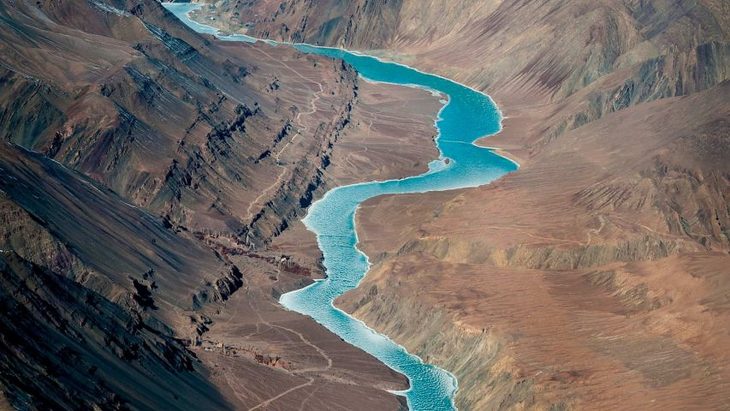
The Indus River is one of the longest rivers in Asia, flowing through the heart of South Asia. With its origins in the Tibetan Plateau, the river traverses through India and Pakistan, serving as a lifeline for millions of people. In this article, we will uncover 20 fascinating facts about the Indus River, shedding light on its importance, history, and ecological significance.
Length and Geography
The Indus River stretches approximately 3,180 kilometers (1,976 miles) from its source in the Tibetan Plateau to its delta in the Arabian Sea. It passes through multiple regions, including Tibet, Ladakh, Gilgit-Baltistan, Khyber Pakhtunkhwa, Punjab, and Sindh.
Name and Origin
The name “Indus” is derived from the Sanskrit word “Sindhu,” which means “river.” The river is believed to have been named by the ancient Aryan people who inhabited the region.
Ancient Civilization
The Indus River Valley is home to one of the world’s oldest urban civilizations, known as the Indus Valley Civilization or Harappan Civilization. Flourishing around 2500 BCE, it was characterized by well-planned cities, advanced drainage systems, and a sophisticated trade network.
Water Supply
The Indus River serves as a vital water source for both irrigation and drinking water purposes. It is a lifeline for agriculture, supporting the cultivation of crops such as wheat, rice, cotton, and sugarcane, which are important for the region’s economy.
Tributaries
The Indus River is fed by numerous tributaries, including the Jhelum, Chenab, Ravi, Beas, and Sutlej Rivers. These tributaries contribute to the overall volume of water flowing through the Indus Basin.
Hydropower Generation
The Indus River has great hydropower potential, with several dams and power stations built along its course. These facilities generate a significant amount of electricity, contributing to the energy needs of the region.
Indus River Basin
The Indus River Basin is one of the largest and most important river basins in the world. It spans across four countries: China, India, Afghanistan, and Pakistan. The basin supports a vast population and a diverse range of ecosystems.

Riverine Biodiversity
The Indus River and its tributaries are home to a rich diversity of flora and fauna. The river supports various fish species, including the Indus Mahseer and the Indus Baril. It also provides habitats for birds, reptiles, and mammals.
Indus River Dolphin
The Indus River is famous for its unique resident, the Indus River dolphin. This freshwater dolphin species is endemic to the region and is considered one of the rarest mammals in the world.
Historical Trade Route
The Indus River has historically served as a major trade route, connecting South Asia with Central Asia and beyond. It facilitated the exchange of goods, ideas, and cultures between different civilizations.
Indus Water Treaty
The Indus Water Treaty, signed in 1960 between India and Pakistan, regulates the sharing of water resources of the Indus River and its tributaries. It is one of the most significant water-sharing agreements in the world.
Impact on Civilization
The Indus River has played a crucial role in shaping the civilizations that have thrived along its banks. Its fertile plains and abundant water resources have supported human settlements and agricultural practices for thousands of years.
Religious Significance
The Indus River holds religious significance for several faiths. In Hinduism, the river is considered sacred and is worshipped as the goddess Sindhu. It is also mentioned in ancient Hindu scriptures.
Mountaineering and Adventure Tourism
The mountainous regions surrounding the Indus River offer incredible opportunities for mountaineering and adventure tourism. The majestic peaks of the Karakoram and Himalayan ranges attract climbers and adventure enthusiasts from around the world.
Indus River Delta
The Indus River forms a vast delta region as it reaches the Arabian Sea. The Indus River Delta is an important ecosystem that supports mangrove forests, wetlands, and diverse marine life.
Indus Valley Railway
The Indus Valley Railway is a historic railway line that once connected the city of Karachi in Pakistan with the city of Kotri. It was one of the earliest railway lines in the region and played a significant role in trade and transportation.
Environmental Challenges
The Indus River faces various environmental challenges, including pollution, deforestation, and water scarcity. These issues pose threats to the river’s ecosystem and the communities that depend on it.

Cultural Heritage
The Indus River and its surrounding regions have a rich cultural heritage. The traditional music, dance, crafts, and cuisine of the Indus Valley reflect the diverse cultural influences that have shaped the region over centuries.
Tourism and Recreation
The Indus River offers opportunities for recreational activities such as boating, fishing, and river rafting. It attracts tourists who are drawn to its scenic beauty and the cultural treasures found along its banks.
Conclusion
The Indus River is not just a geographical feature; it is a symbol of life, history, and cultural diversity. It has shaped civilizations, provided sustenance, and connected communities across time. From its source in the Tibetan Plateau to its delta in the Arabian Sea, the Indus River continues to flow, carrying with it the stories of the past and the hopes for the future.
Frequently Asked Questions (FAQs)
Is the Indus River navigable?
The Indus River is navigable to a certain extent. In some sections, especially downstream, it is used for the transportation of goods by small boats and barges.
Is the Indus River a source of freshwater?
Yes, the Indus River is a freshwater river. It provides a crucial source of freshwater for irrigation, drinking water, and various other purposes in the region.
Are there any famous landmarks or cities along the Indus River?
The Indus River passes through several significant cities and landmarks, including Leh, Skardu, Gilgit, Islamabad, and Hyderabad. Each of these places has its own historical, cultural, and natural attractions.
Can I take a river cruise on the Indus River?
River cruises on the Indus River are not common. However, there are options for boat rides and rafting experiences in certain sections of the river, particularly in regions with tourism infrastructure.
Is fishing allowed in the Indus River?
Fishing is allowed in the Indus River and its tributaries, but regulations and permits may be required. It is important to adhere to local fishing guidelines to protect the river’s biodiversity and sustain its fish populations.
Was this page helpful?
Our commitment to delivering trustworthy and engaging content is at the heart of what we do. Each fact on our site is contributed by real users like you, bringing a wealth of diverse insights and information. To ensure the highest standards of accuracy and reliability, our dedicated editors meticulously review each submission. This process guarantees that the facts we share are not only fascinating but also credible. Trust in our commitment to quality and authenticity as you explore and learn with us.


